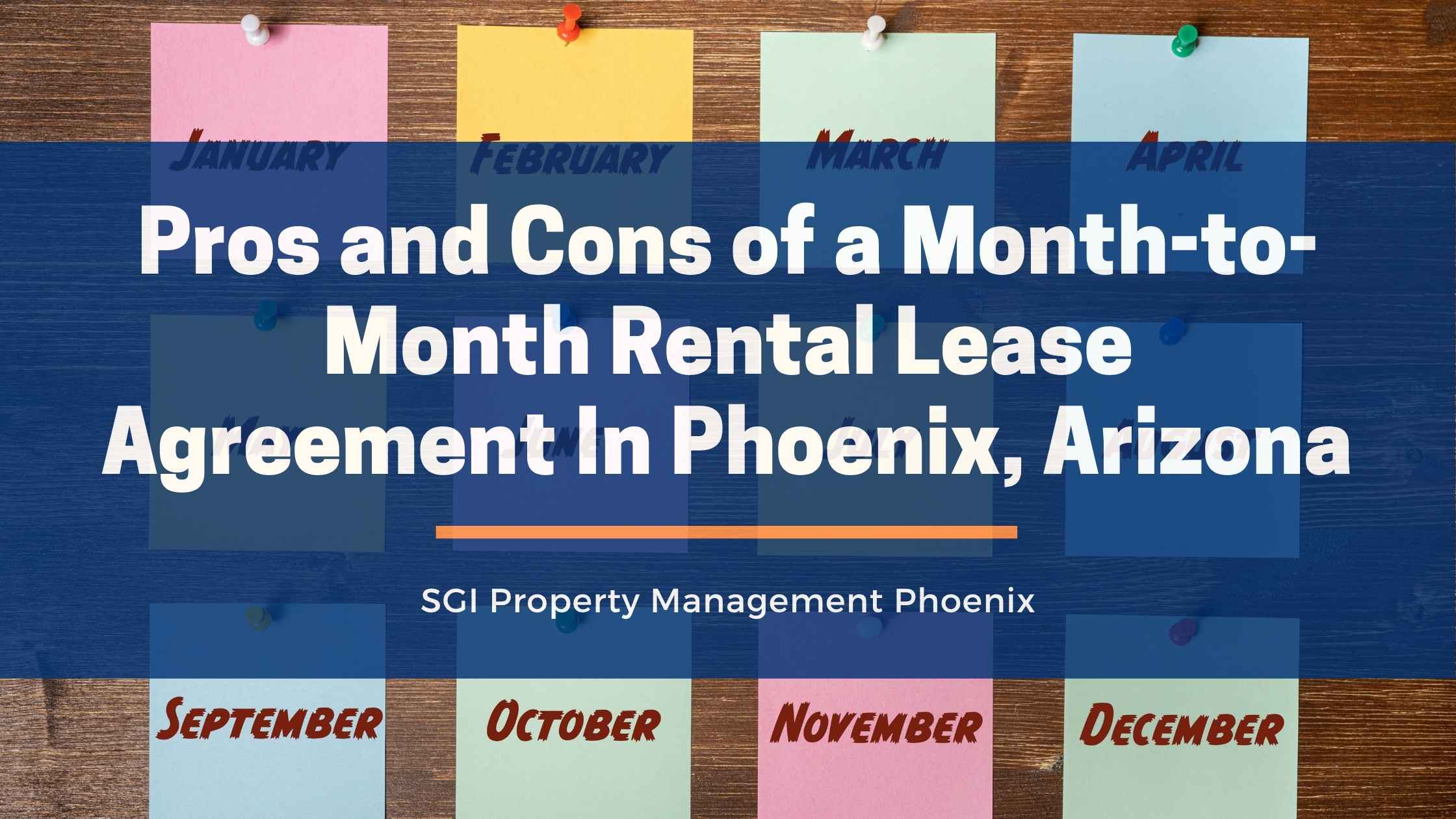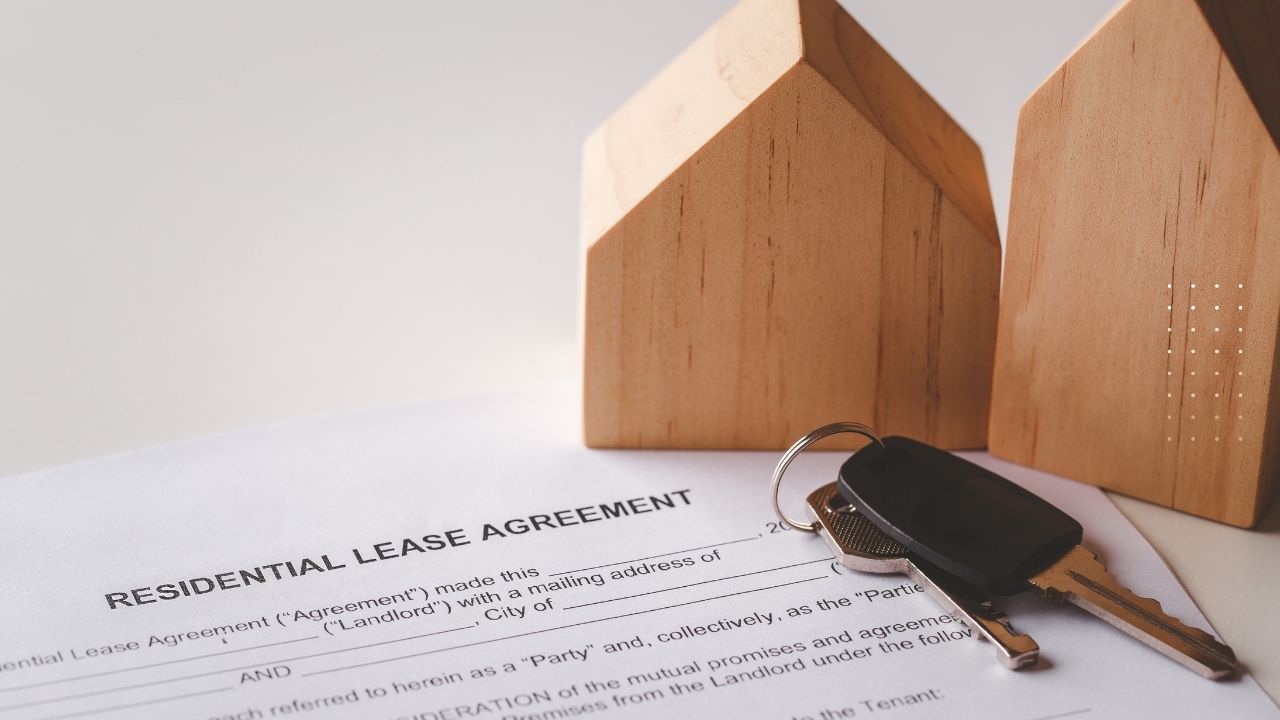
When it comes to managing rental properties, every landlord faces the same question at some point, should I offer a month-to-month lease or stick with a fixed-term agreement? While both have their advantages, month-to-month arrangements bring a unique blend of freedom and uncertainty for both landlords and tenants. Understanding how these leases work, and what to expect, can help you make smarter decisions about your rental strategy.
What Is a Month-to-Month Lease Agreement?
A month-to-month lease renews automatically every 30 days unless either party gives notice to end it. Instead of committing to a one-year term, both the landlord and tenant can continue renting on a flexible basis. In Arizona, this setup offers a welcome middle ground, ideal for landlords or renters who need short-term housing or want to stay adaptable to changing plans.
For landlords, flexibility can mean freedom. You can adjust to the market, manage property transitions, or plan for a potential sale without being tied down for a year or more. If you ever need to move back into your own property or make renovations, you’re not waiting months for a lease to expire.
The Upside of Flexibility
Month-to-month leases shine when flexibility matters most. They can work especially well in situations where future plans are uncertain. For example, if a tenant is relocating for work or finishing up a temporary contract, the short-term nature is appealing.
From a landlord’s perspective, these agreements make it easier to adapt to market shifts. If rental prices in Phoenix start climbing, you can adjust your rates sooner instead of waiting for a year-long lease to end. A landlord who keeps an eye on the Arizona landlord-tenant law will know the proper way to issue these changes, 30 days’ notice is required for rent increases or modifications.
Another benefit is being able to part ways with tenants who aren’t maintaining the property or consistently paying late. Month-to-month terms allow landlords to end a problematic tenancy without lengthy eviction timelines.
You may also attract a wider pool of renters, such as traveling nurses, students, or professionals in transition, who appreciate shorter commitments.

The Challenges of a Month-to-Month Agreement
While flexibility is a big plus, it comes with trade-offs. The most obvious drawback is unpredictability. A tenant can decide to move out with just 30 days’ notice, leaving you scrambling to fill the vacancy. That means more marketing, more showings, and potentially longer periods without rent.
High turnover can also bring hidden costs, repainting, cleaning, and small repairs between tenants. Frequent move-ins and move-outs increase wear and tear, especially in high-demand markets like Phoenix.
To manage this effectively, it’s important to have a strategy for minimizing rental vacancies. Proactive maintenance, responsive communication, and solid tenant screening can go a long way toward keeping your property occupied and profitable.
Another challenge is rent negotiations. Because tenants know they’re not locked into a long lease, they might be more inclined to bargain for lower rent or other concessions. This can make income less stable, particularly in slower seasons when fewer renters are available.
The Importance of Written Agreements
Even with a month-to-month arrangement, it’s important that every term is documented in writing. Arizona law requires 30 days’ notice for any lease changes, and verbal agreements aren’t legally enforceable. A written lease provides clarity for both parties by outlining notice periods, rent adjustments, and property rules. Using a detailed rental lease guide helps ensure the agreement aligns with Arizona regulations and protects everyone involved from potential misunderstandings.

When a Month-to-Month Lease Makes Sense
This kind of lease isn’t for everyone. It works well if you’re between long-term tenants, testing rental rates, or planning to sell soon. It also suits landlords who prefer flexibility and can handle occasional vacancy gaps.
On the other hand, if you rely on steady, predictable income or prefer longer-term relationships with tenants, a fixed-term lease is probably the better option. A year-long lease minimizes turnover and provides financial consistency, something many landlords value, especially when managing multiple properties.
Understanding your priorities is key. If your focus is flexibility and market responsiveness, month-to-month leasing offers freedom. If stability and steady cash flow matter more, a fixed-term agreement delivers peace of mind.
Legal and Financial Considerations

Before making a decision, it’s worth understanding the legal nuances of Arizona rental law. Familiarizing yourself with Arizona’s rules for breaking a lease can help you anticipate potential issues. Both tenants and landlords have clear rights under state law, and knowing them upfront can prevent costly misunderstandings.
Landlords should also consider local market conditions. In a competitive rental market, tenants may prefer flexibility. In slower markets, a month-to-month lease might make your property less appealing compared to others offering stable long-term terms.
Final Thoughts
Month-to-month leases can be a powerful tool for property owners who value flexibility. They allow you to respond quickly to changes in your personal plans or the rental market. But they also require careful management and preparation for the unpredictability that comes with shorter commitments.
Every property and landlord is different, and the right approach depends on your goals. Whether you’re focused on stability, maximizing rent potential, or keeping your options open, understanding both the benefits and drawbacks will help you choose wisely.
For more insights into managing rentals effectively and understanding Arizona property laws, visit Phoenix Property Management.









